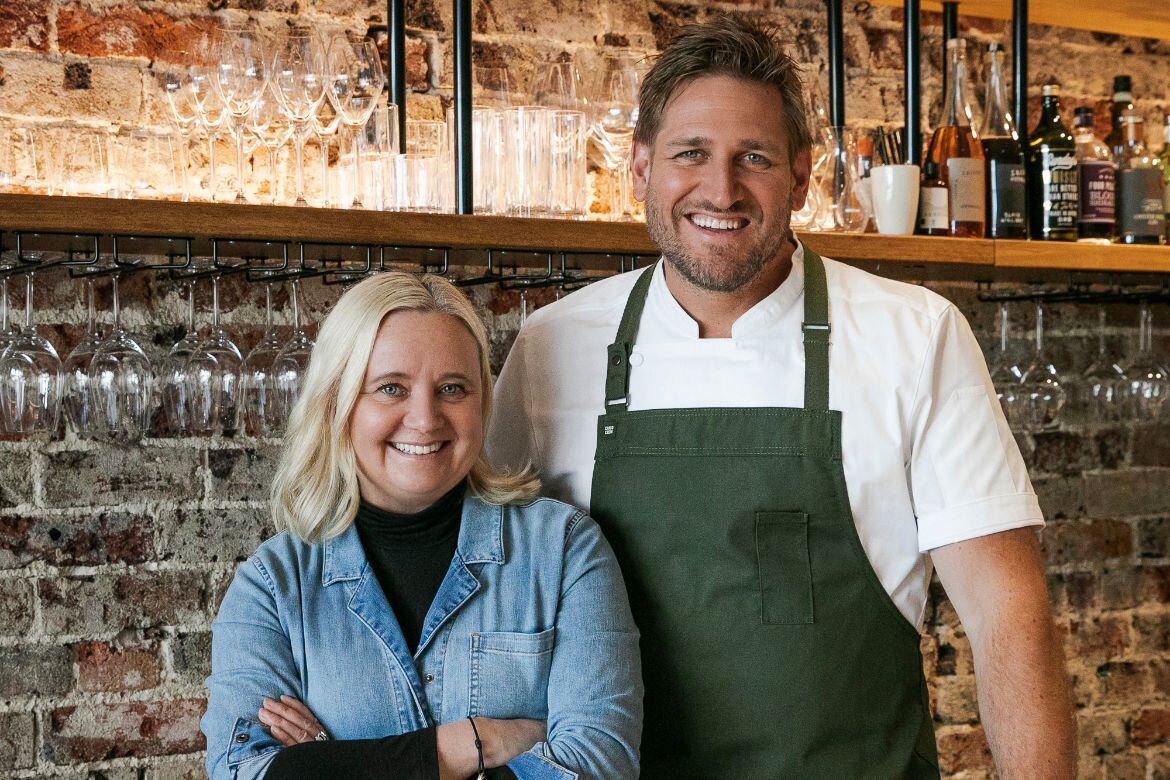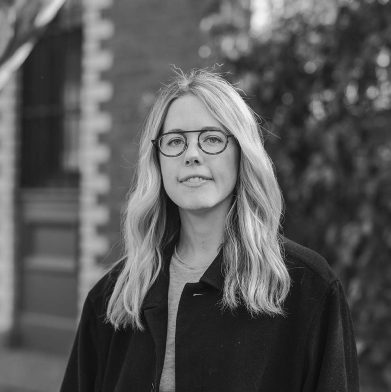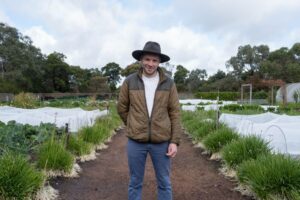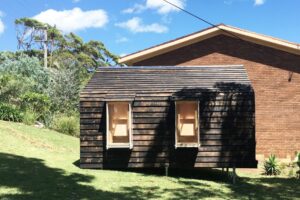Can you tell us a bit about yourself and Cargo Crew?
We were raised in a creative family where quality was appreciated. I started Cargo Crew in 2002 after realising the uniform sector was in desperate need of reinvention. At the time, I was running my own label that I’d started with a friend, after studying fashion design at RMIT and was often approached by businesses to create fashion-focused uniforms. There was a real gap in the market for contemporary uniform options, that were also durable enough for the environments they’re worn in. My grandfather Patrick was the head waiter in the 1930s delivering silver service at London’s iconic Savoy Hotel, so in many ways that intersection of hospitality and presentation runs in our blood!
After running the business solo for six years, my sister Narelle joined me, bringing her advertising and client service background. Soon after that my husband Paul joined full time to focus on our systems, IT and day to day operations, so Cargo Crew became a family run enterprise.
Over the past 21 years since the business began, Cargo Crew has grown a client base of thousands of Australia’s leading restaurants, arts institutions, festivals and more, and brought on Curtis Stone as our chefwear ambassador. Cargo Crew has shipped to over 80 countries and we are focused on building the global uniform destination. We offer a direct-to-consumer range too, so anyone can purchase professional-quality pieces for home or their small businesses.

How does design come into what you do?
Design for us is tied to our product pillars of quality, function and innovation. There is the very important aspect of how our uniforms feel to wear and how they perform in professional settings. We spent many months refining our best-selling Banjo Chef Apron, which is now worn industry-wide by chefs like Curtis Stone and Josh Niland. It’s really robustly constructed using recycled polyester (which means recycled plastic bottles are transformed into high performance yarns). We’re big on spending time on the design process to ensure no detail is overlooked. For example, all our aprons have extra long waist ties made from heavy weight and robust herringbone that make it easy to tie towards the front, and the waist ties are detachable to avoid tangling while washing.
Equally important as function is the visual language of our uniforms – they’re not simply utilitarian, they are also designed for presentation. We marry up technical skill and innovation with a unique point of view because our customers know the power of feeling good in what they’re wearing. We are steadfast about preserving that 360 degree design ethos on the impact of considered and purposeful products.

Tell us about some of the collaborations you’ve worked on, and what insights do they bring in terms of functionality when it comes to uniform design?
We love collaborating with other creatives who are passionate about their craft and we believe deeply that understanding your customers needs delivers meaningful execution. Our Chefwear is a great example of this where we collaborated with Curtis Stone and his team to create our first Chefwear styles. We created samples, ran wear trials and gathered feedback on fit, function and fabric comfort that informed iterative and beneficial updates to the designs.
We also work very closely with other food innovators including leading bakers and food creatives. When we designed our first boiler suit we shared samples with our community of creators who trialled the product for both fit and comfort while working. The result has delivered a design that not only functionally works for daily workwear, but also people feel fabulous wearing when they clock off. A uniform plays such a visual role in representing a brand, whether that’s a business or personal brand, and Cargo Crew is here to make that a lasting impression.

What’s the conscious collection and how it tackling sustainability?
The Conscious Collection is a capsule range of purposefully-designed aprons and tote bags made from recycled materials like Repreve® recycled polyester containing at least four plastic bottles, hemp or recycled yarn fabrics. While it’s a milestone for Cargo Crew’s sustainability program, as a business we have been exploring ways of operating in more environmentally-responsible ways for years.
Since we redesigned our entire packaging and waste-reduction measures in 2020, we’ve diverted 1,186.5-kilograms of our own textiles from landfill and eliminated eight tonnes of plastic from our supply chain. With this collection, we wanted to demonstrate that you can create a circular product that is made with minimal impact on the environment, but that is still also durable and performance-led.

In what ways do you think a uniform can express a brand?
What we wear says so much about who we are without us having to say a word. When we want to make an impression, most of us will consider how our outfit will or won’t help us achieve the desired effect. Uniforms are no different. They are hugely impactful and important in how we as consumers and communities experience a brand, a venue or an experience. They are a critical touchpoint for how a brand’s visual language comes to life and can say so much about how a business values its customer and its team.
Cargo Crew
cargocrew.com.au










